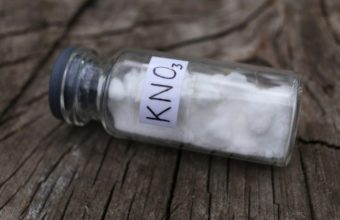Epsom salt, scientifically known as magnesium sulfate, is often used as a homemade remedy for tree stump removal due to its ability to draw moisture out of the wood, which inhibits the stump’s growth and accelerates its decay.
Here’s a detailed look at how Epsom salt affects a tree stump…
Dehydration
- Moisture Absorption – Epsom salt works by absorbing moisture from the stump. Since trees, including their stumps, require moisture to sustain their biological processes, depriving the stump of moisture causes it to dry out and die.
Inhibiting Growth
- Growth Suppression – By drying out the stump, Epsom salt effectively inhibits any new growth that might emerge from the stump. This is particularly useful for stumps that continue to sprout shoots, attempting to regrow after the tree has been cut down.
Promoting Decay
- Decay Acceleration – Once the stump is dead and deprived of moisture, it becomes more susceptible to decay. The lack of moisture makes the wood less resilient and more inviting to wood-decomposing organisms such as fungi and bacteria, which further break down the stump’s structure.
Application Method
- Drilling Holes – The typical method of applying Epsom salt to a tree stump involves drilling holes across the top surface and sides of the stump, making them deep and wide enough to allow for ample salt penetration.
- Filling with Epsom Salt – The holes are then filled with Epsom salt, and water is added to dissolve the salt, facilitating its movement into the stump’s wood.
- Covering the Stump – Often, the stump is covered with a plastic sheet or tarp to keep the salt in place and to retain moisture, which is necessary for the salt to stay effective. The goal is not to keep the stump moist but to ensure the salt doesn’t wash away and remains in contact with the stump to draw out moisture continuously.
Considerations
- Timeframe – The process of killing a tree stump with Epsom salt is not immediate. It can take several months to a year or more for the stump to completely die and begin to decompose significantly.
- Repeated Applications – It may be necessary to reapply Epsom salt periodically to ensure the stump remains deprived of moisture and continues to decay.
- Environmental Impact – Using Epsom salt is considered a more environmentally friendly alternative to chemical stump removers, but it’s still important to use it judiciously to avoid excessive salt accumulation in the soil, which could affect surrounding vegetation.
Epsom salt acts as a desiccant, drawing moisture out of a tree stump, which leads to its death, inhibits sprouting, and promotes decay, making it a popular, though slow, method for stump removal in home landscaping.






